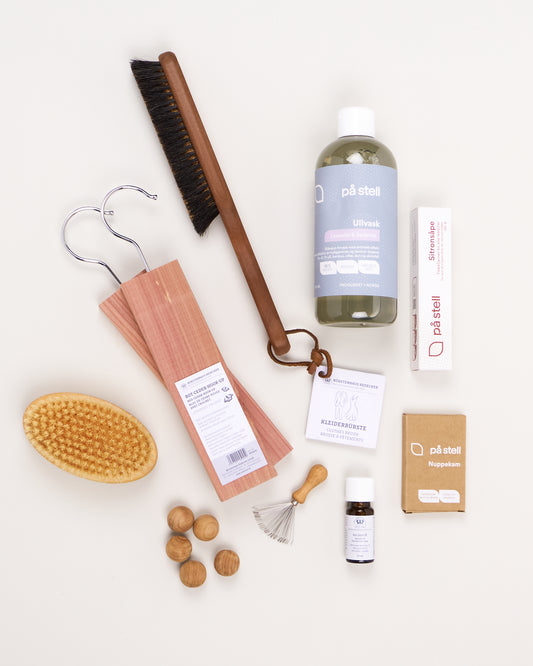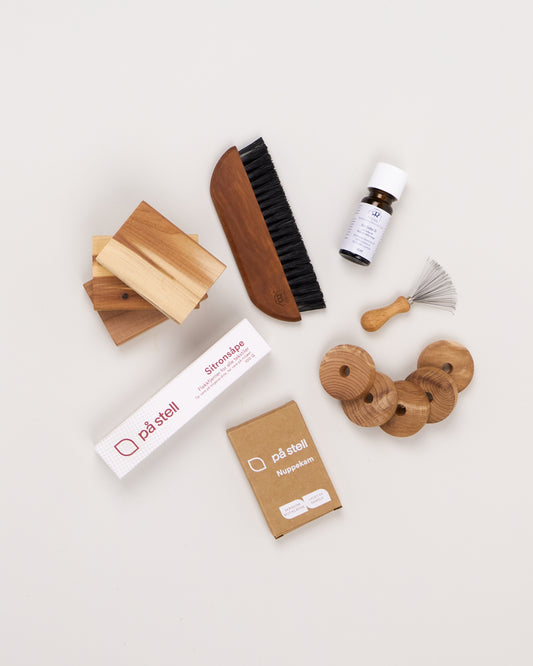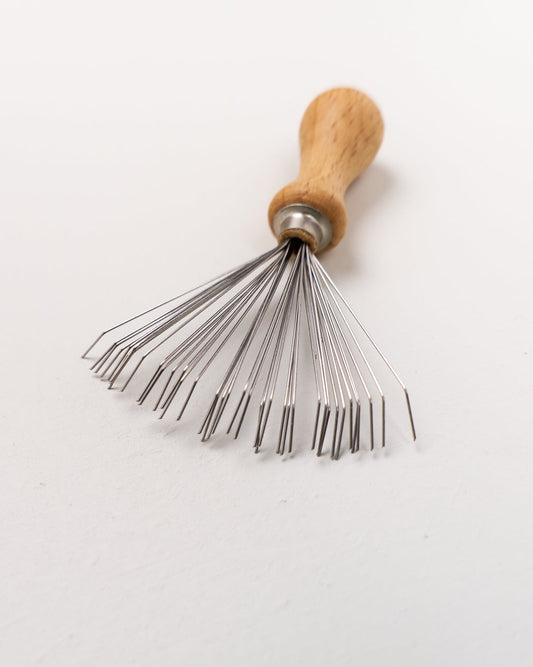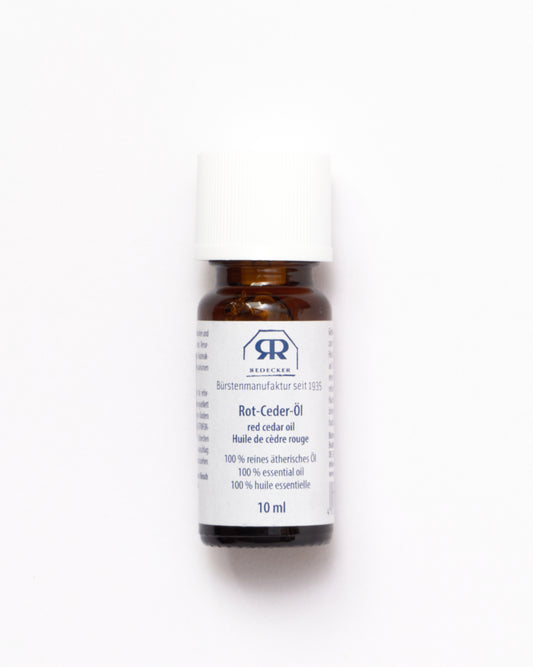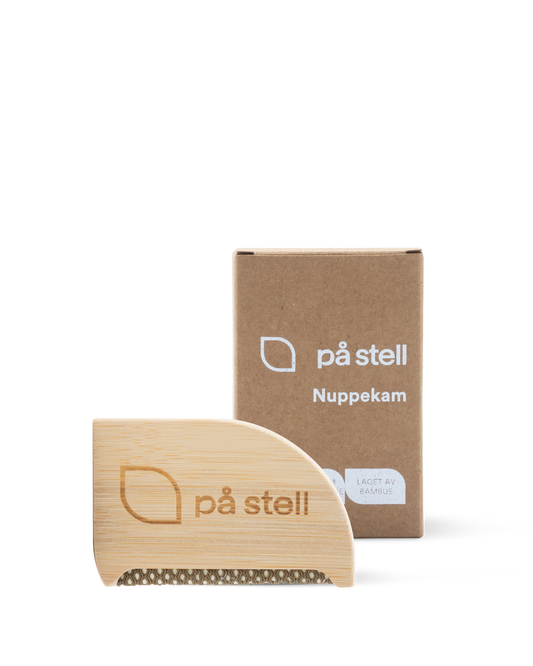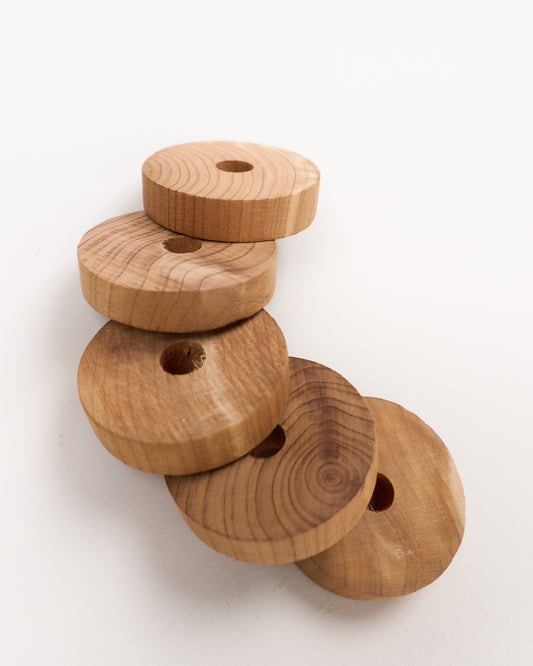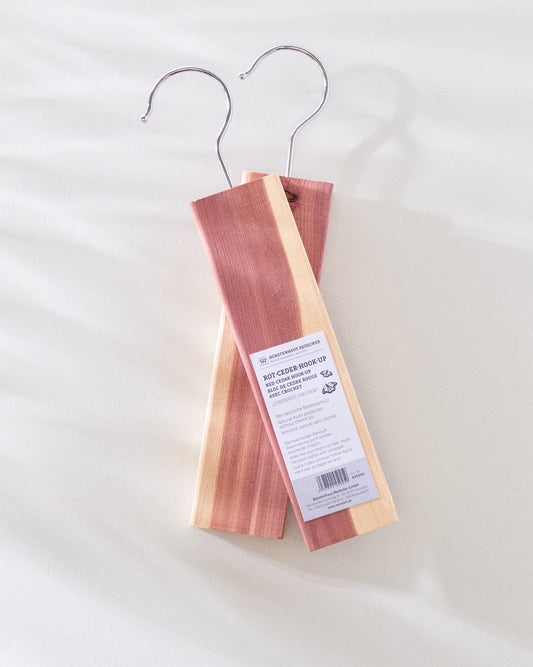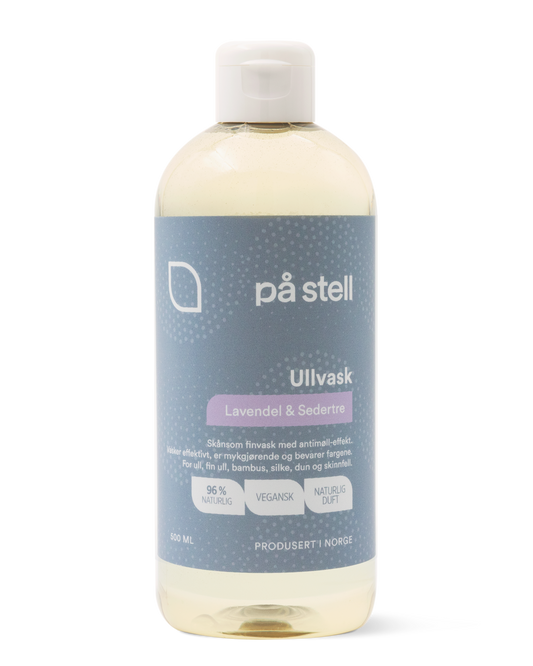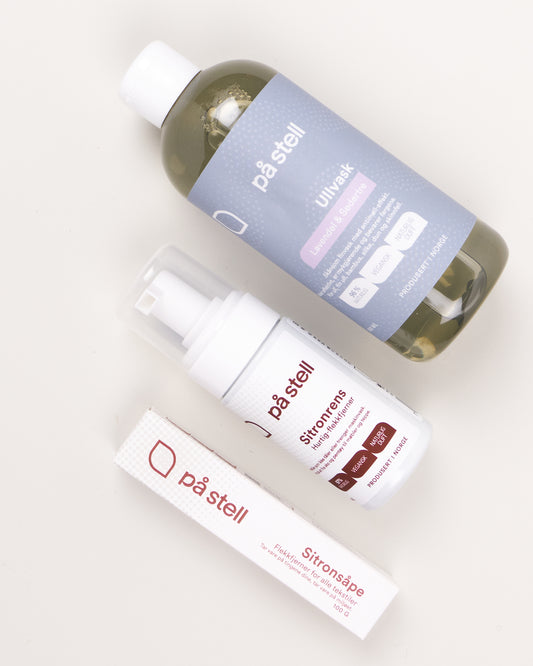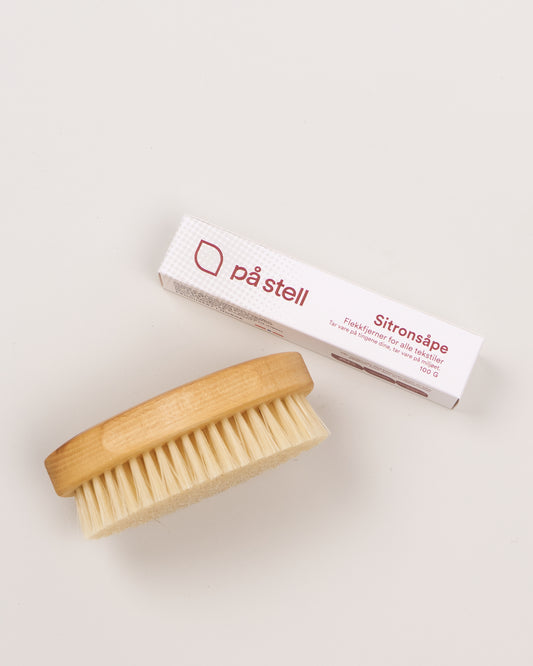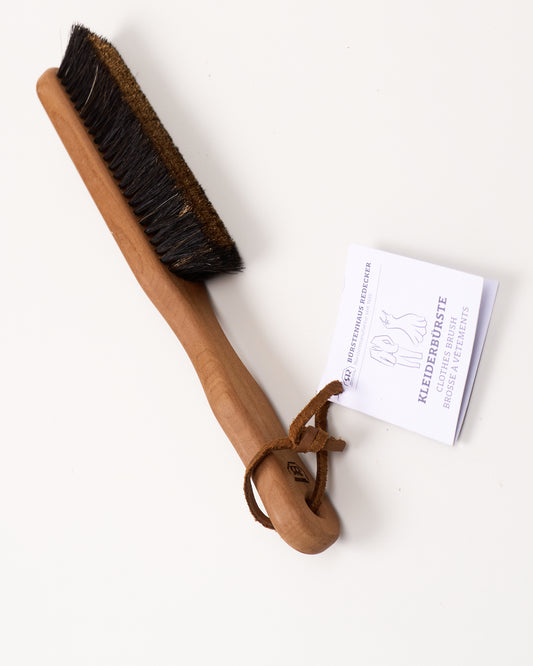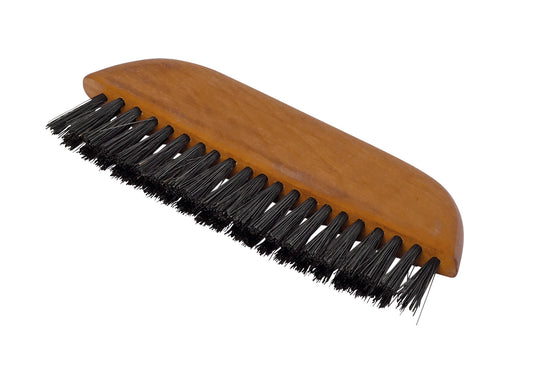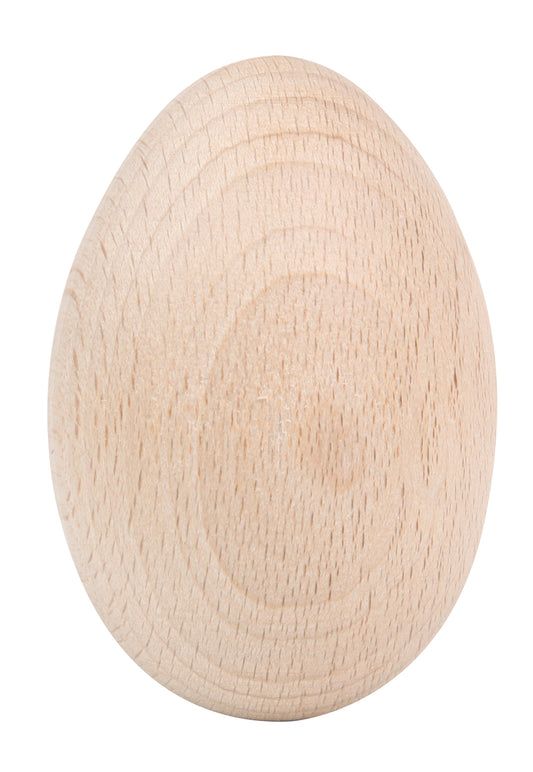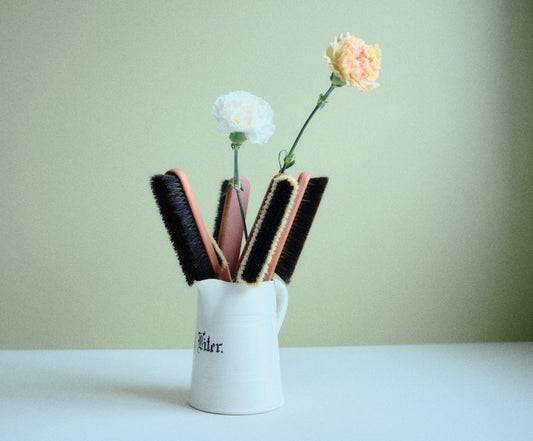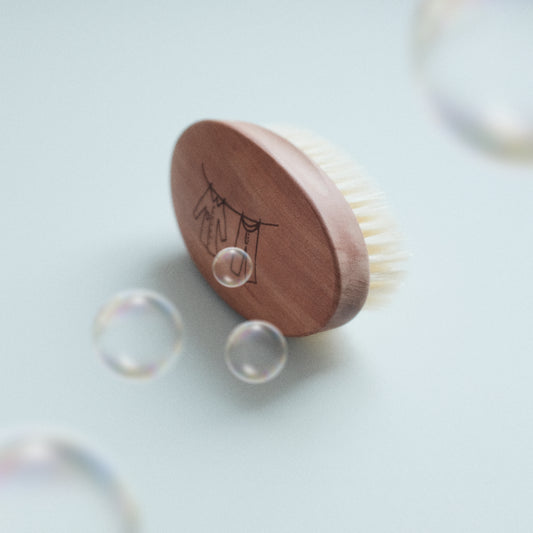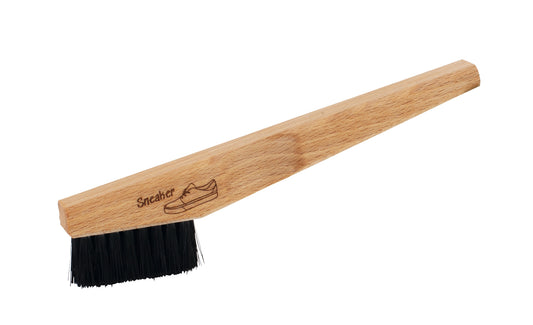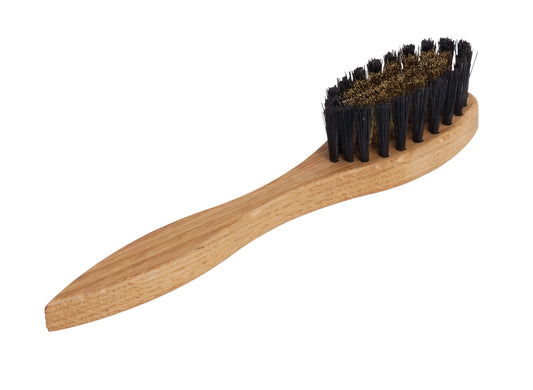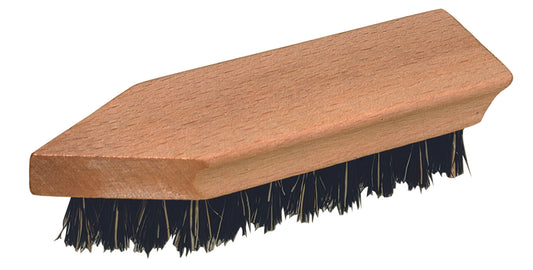Maintenance guide
Take care of your clothes
Our products are designed to last, but we still need your help while your garment is yours. Here you will find maintenance instructions, tips and tricks on how to care for your garment so that it can last as long as possible.

WASHING AND DRYING
Stains:
Stains should be removed instead of/before washing the entire garment. Use a mild stain remover soap mixed with a drop of water directly on the stain. Mix well to create a lather and use a gentle laundry brush to work the stain until it fades.
Wool:
Be quick to remove the stain so it doesn't set in. Use lemon soap and work carefully. Leave for a while before rinsing with water.
Wash:
Wash according to the recommendations on the care label.
Washing wool:
Wash as infrequently as possible! This will preserve the natural properties of the wool and extend the life of the garment. Try to air the garment, inside and out, for at least a day to neutralize most odors.
It's also good to let woolen garments rest every now and then, by not wearing them for many days in a row.
If you need to wash the entire garment, you can either take it to a professional dry cleaner or wash it as follows:
When hand washing wool, use a maximum of 30 degrees water and a mild wool detergent. To avoid discoloration, make sure that the detergent is properly dissolved in the water before adding the garment, and squeeze gently. Wool should never be left in water for a long time. Do not leave in soapy water for more than 10-15 minutes before changing the water. Change the water several times until there is no more soap left.
The wool program on a modern washing machine can actually be gentler on your wool garment than traditional hand washing. Use liquid wool detergent.
Drying:
Avoid direct sunlight as this will affect the color, especially on cotton fabrics.
Drying wool:
Allow wool, and especially heavy garments, to dry flat to avoid stretching and fraying the fibers. While the garment is wet, it can be gently stretched and shaped to adjust its shape.

STORAGE
Storage:
A knitted garment should be stored lying down to avoid losing its shape, which it will do after a while if it is hung on a hanger, simply due to gravity. Fold and stack neatly.
Garments made from woven cotton fabric last best if they are allowed to hang. This will keep the fabric fresh and wrinkle-free.
Storage over time:
Make sure your wool garments are clean before packing them away for an extended period. This is the one occasion when a full wash is necessary because moths prefer dirty fabrics! Dirt, such as food, skin particles and hair, will also wear down the fibers over time.
Fold and stack neatly and store garments in sealed plastic or paper bags or boxes. Textiles should be stored in a place that is neither damp nor too hot.
Use cedarwood or lavender with your wool garments to prevent moths.
Leather products, such as shoes or handbags, should not be stored in plastic. For example, use a cotton canvas bag instead.

MAINTENANCE
Pilling:
Wool garments can pill when short fibers separate from the yarn. This will decrease over time. Carefully use a new razor or a lint comb to shave the garment while it is lying on a flat surface. Do not shave wool containing mohair, as this will cause it to lose its fluffy surface. For long-haired wool, we recommend a gentle clothes brush.
Avoid friction between a wool garment and, for example, bags, bracelets or watches which can cause more pilling.
Washing can also cause pilling, so that's another reason to minimize washing.
After removing the pills, you can use a clothes brush to gently smooth the surface.
Repairs:
We offer free repairs on all our garments because we know that repairs greatly extend the life of a garment.
Many small repairs can also be easily done at home. Please contact us if you would like help or spare parts.
Caring treatment:
Treating your garment with care will also mean you can enjoy it for much longer. Wash, maintain and store as recommended, avoid rough handling, and be patient and careful when you close your zippers...
Tips and tricks
-
Zipper
If you're having trouble closing the zipper, use candle wax to help it slide more smoothly. You can also try closing the zipper slightly with pliers to give it a better grip.
-
Traveling
If you don't have detergent with you, you can use a mild hair shampoo to wash your clothes, but only when washing by hand.
-
Smell
If your cotton garment smells, try pouring baking soda on it. Leave it for a while before brushing it off and washing the garment. Note: Be careful with dark garments, as baking soda can leave a light stain.
-
Save energy
Remember that the temperature indicated on the care label is the maximum recommended washing temperature and that in most cases your clothes will be just as clean when washed at a lower temperature. Washing at a lower temperature saves energy.
-
Save water
Wool doesn't need to be washed often and can be aired instead. This applies to many other garments too - we often put clothes to wash even if it's not necessary!
Give your clothes a new life
Even if your garment is completely worn out when you're done with it, it can still be useful in another form.
An easy way to upcycle a wool garment is to felt it by washing it at a warmer temperature. A regular machine wash at 60 degrees will be enough to felt wool that is not Superwash treated. Wash with regular detergent and together with at least one other garment (optional material) for a good effect. Stretch and shape the garment while it is wet after washing. When it is dry, you can freely cut the garment since it does not unravel, and turn it into something new. You can find ideas on what you can make among our upcycled garments .
Cotton fabric can be used for gift wrapping, rag rugs, crocheted baskets or sewn into something else. Take the opportunity to think creatively and environmentally friendly!
Small remnants or garments that are no longer suitable for redesign can still be useful. Perhaps they can be used to patch other garments? Or cut into small pieces and used as stuffing for pillows, pincushions or stuffed animals?
If the garment is still usable, consider options such as selling it used, giving it away to someone you know or someone who needs it, or donating it to a local thrift store.
Clothing care products
-
Extra large caring kit
Regular price 1.499,00 NOKRegular priceUnit price / per1.661,00 NOKSale price 1.499,00 NOKSale -
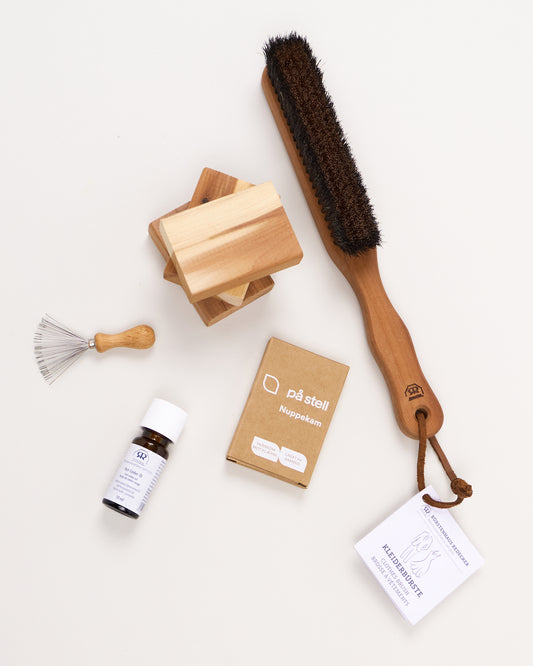 Sale
SaleLarge caring kit
Regular price 789,00 NOKRegular priceUnit price / per845,00 NOKSale price 789,00 NOKSale -
Medium-sized caring kit
Regular price 629,00 NOKRegular priceUnit price / per683,00 NOKSale price 629,00 NOKSale -
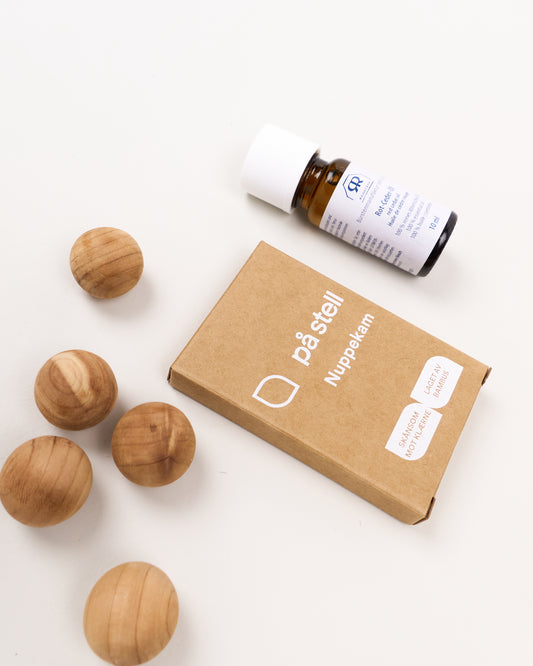 Sale
SaleSmall caring kit
Regular price 269,00 NOKRegular priceUnit price / per287,00 NOKSale price 269,00 NOKSale -
Brush cleaner for Velcro, clothes brushes and hair brushes
Regular price 49,00 NOKRegular priceUnit price / per -
Red cedar wood oil
Regular price 119,00 NOKRegular priceUnit price / per -
Red cedar wood balls
Regular price 69,00 NOKRegular priceUnit price / per -
Red cedar blocks
Regular price 99,00 NOKRegular priceUnit price / per -
Wool lint comb
Regular price 99,00 NOKRegular priceUnit price / per -
Cedar wood rings
Regular price 99,00 NOKRegular priceUnit price / per -
Red cedar hook up
Regular price 99,00 NOKRegular priceUnit price / per -
Wool detergent - lavender and cedar
Regular price 229,00 NOKRegular priceUnit price / per -
Caring kit for washing wool
Regular price 549,00 NOKRegular priceUnit price / per577,00 NOKSale price 549,00 NOKSale -
Lemon soap stick for stain removal
Regular price 119,00 NOKRegular priceUnit price / per -
Caring kit for new parents
Regular price 479,00 NOKRegular priceUnit price / per518,00 NOKSale price 479,00 NOKSale -
Clothes brush with bronze for coarse textiles
Regular price 479,00 NOKRegular priceUnit price / per -
Pocket clothes brush for all fabrics
Regular price 99,00 NOKRegular priceUnit price / per -
Darning egg in untreated wood
Regular price 49,00 NOKRegular priceUnit price / per -
Clothes brush for delicate fabrics
Regular price 479,00 NOKRegular priceUnit price / per -
Laudry brush for stain removal
Regular price 399,00 NOKRegular priceUnit price / per -
Shoe brush for sneakers
Regular price 109,00 NOKRegular priceUnit price / per -
 Sale
SaleCaring kit for shoes
Regular price 449,00 NOKRegular priceUnit price / per486,00 NOKSale price 449,00 NOKSale -
Shoe brush for suede
Regular price 99,00 NOKRegular priceUnit price / per -
Shoe brush with stiff natural bristles for cleaning
Regular price 99,00 NOKRegular priceUnit price / per -
Waterproofing spray for clothes, shoes and textiles
Regular price 159,00 NOKRegular priceUnit price / per

